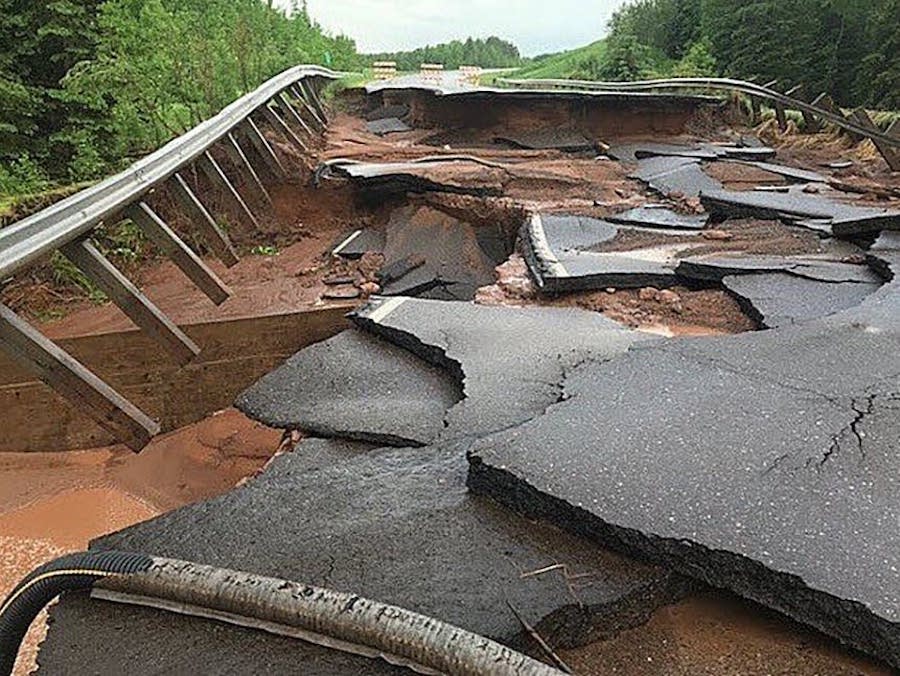The Federal Emergency Management Agency has failed to develop a program under mandate from a 21-year-old disaster response law that funds efforts to prevent recurring damage to roads and bridges and other infrastructure from extreme weather, the U.S. Dept. of Homeland Security’s Inspector General says in a new report. The watchdog says the agency claims its priorities have been responding to numerous major disasters in that time frame.
FEMA failed to publish regulations and policies as required by the 2000 Disaster Mitigation Act that would provide incentives to protect structures from future repetitive damage and control costs of federal disaster assistance.
Of about $4.5 billion that FEMA obligated for more than 110,000 road and bridge projects from 2009 to 2018, nearly $2 billion was for repetitive damage, the report contends. The IG says one state funding applicant received $4.6 million for road and bridge replacement “for the same damages under seven different declared disasters between 2009 and 2017.”
FEMA's eight-state Region 4, its largest, that includes Florida, Alabama, Georgia, Kentucky, Mississippi the Carolinas and Tennessee, received the most repetitive damage funding at about $475.5 million in the 2009-2018 period. Its five-state Region 5, including Illinois, Indiana, Minnesota, Ohio and Wisconsin, received the least at $47.7 million.
The report analyzed just FEMA road and bridge disaster funding, with other infrastructure relief categories including water control facilities, public utilities and parks and recreation.
The 2000 law directed FEMA to reduce federal funding for damage repair from 75% to 25% if the structure was damaged more than once in the proceeding 10 years and the owner did not implement appropriate mitigation measures to protect it. The law included a new set of requirements for FEMA to authorize a program for pre-disaster mitigation to limit federal relief and assistance costs.
IG data identified five states with the highest repetitive funding from 2009 to 2018, which it identified as three of more funding grants to applicants, for a total of $324 million in FEMA funds. South Dakota had the most applicants, 251, for a total of $23.1 million. New York had 131 for a total of $143.4 million. Other states studied were Minnesota, Missouri and Kansas.
In one success story, the IG says Jackson Township Mo., used mitigation funds to add wing walls on two bridges in 2017 that previously had sustained repeated storm damage, but there was no further impact after the improvements.
Compliance with the law was not a priority at FEMA, the report maintains, with the agency focused on its mission for immediate disaster response.
The IG pointed to shortfalls in FEMA project damage and mitigation data collection, noting the agency's claim that it “is not required ... by statute or regulation” to keep such records. The analysis noted inconsistencies in agency data on repetitive damage and in maintaining an accurate historical record.
FEMA said it now is transferring records from its legacy data system to a newer interactive system called Grants Manager in use since 2017, the IG report noted, but the watchdog pointed to a lag in training for staff and for state and local funding applicants in using the system, “which has resulted in inconsistent and inadequate data input,” state emergency response officials told IG staff. Some cited learning the system as "trial and error,” says the IG. FEMA officials said that agency staff now are responsible for entering damage data from applicants, to alleviate inconsistencies, but the IG said lack of “a standard format” to track location data “will not address the integrity of data or prevent inconsistencies.”
The report also noted difficulties in tracking and sharing data as impediments to applicants’ mitigation efforts related to repetitive damages.
FEMA started the process to enact regulations in 2009 and added language on repetitively damaged infrastructure in 2018 legislation that requires FEMA-funded projects to “use the latest hazard resistant design standards.” But new regulations were never finalized to address the law’s intent "to use mitigation to incentivize long-term recovery," says the IG.
“Even if a regulation was implemented today, because of FEMA’s delay, as long as three decades may pass from the enactment of [the 2000 law] before [the agency] can reduce the federal cost share,” the IG said.
FEMA accepted all of the IG’s recommendations, noting recent efforts in the last 18 months to improve its project location tracking and applicant understanding of mitigation standards and project funding rules.
“The release of this report highlights the importance of investing in resilient roads and bridges,” Portland Cement Association President & CEO Michael Ireland told ENR. “This is especially important as we have seen a steady increase in natural disasters on a year over year basis." He added that concrete is critical to improving the resilience of transportation infrastructure.







Post a comment to this article
Report Abusive Comment